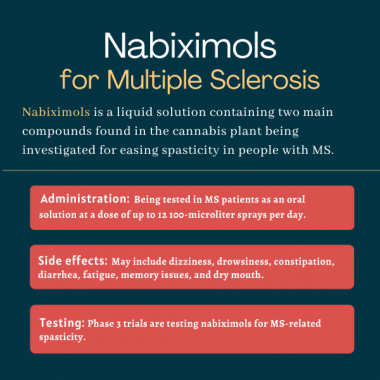
FAQs about nabiximols in MS
Nabiximols is not approved to treat multiple sclerosis in the U.S., but in Canada and much of Europe, the medication is authorized to help ease disease-related spasticity in MS. It is indicated for patients who do not respond to standard spasticity therapies. Treatment is thought to ease spasticity by helping to normalize imbalanced nervous system signals that cause muscles to tighten.
Nabiximols is now being tested for multiple sclerosis-related spasticity in three Phase 3 clinical trials. If trial results are positive, it is possible that they may support applications seeking the medication’s approval by the U.S. Food and Drug Administration. However, it is currently too early to know if or when nabiximols might be approved for use in the U.S.
Nabiximols has not been well-studied in pregnant patients. The medication’s label in the U.K. recommends that all patients with the ability to reproduce use effective contraception while on nabiximols and for at least three months after stopping treatment. Notably, nabiximols may reduce the effectiveness of hormonal birth control methods, so other methods (e.g., barriers such as condoms) should be used. Nabiximols should be used during pregnancy only if the benefits of treatment outweigh the potential risks to the fetus.
In the SAVANT Phase 2 and GWSP0604 Phase 3 trials, participants were treated with nabiximols for four weeks to identify those who appeared to benefit from the therapy. More than half of patients were deemed “responders,” defined as those who experienced a 20% or higher improvement in spasticity scores — meaning an easing of spasticity symptoms — after four weeks.
Neither hair loss nor weight gain has been reported as side effects of nabiximols in clinical studies. Patients who experience unexpected effects of treatment are advised to discuss these with their healthcare team.
 Fact-checked by
Fact-checked by 


